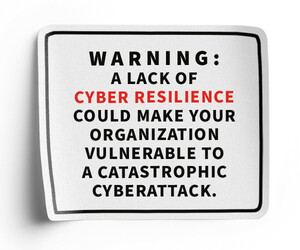Visibility Gaps Create Vulnerabilities
The first challenge most organizations face is visibility. Even institutions with strong security policies frequently lack a unified view of their IT assets. Large, complex environments may include cloud instances spun up by developers, or devices not connected to endpoint detection and response (EDR) tools. These shadow IT assets become blind spots for defenders and prime opportunities for attackers.
Closing those gaps requires disciplined asset management, comprehensive EDR coverage across the enterprise, and network detection and response tools that correlate activity across on-premises and cloud environments. Without this visibility, even the most detailed IR plan will falter at the first step: recognizing that an attack has occurred.
EXPLORE: The hidden danger of .json endpoints.
Even when detection is effective, coordination is where many financial institutions stumble. On paper, IR playbooks spell out roles, responsibilities and procedures. But in the middle of a ransomware outbreak or data breach, theory often gives way to confusion. Valuable time is lost while leaders rush to assemble the right stakeholders, confirm facts and decide on next steps.
To avoid this, financial institutions must treat incident response as a living process. Plans should be updated at least quarterly to reflect organizational changes, such as leadership turnover or shifts in compliance requirements. Playbooks tailored to specific attack scenarios, such as a business email compromise, can clarify which departments own which tasks, what legal or regulatory notifications may be triggered, and how communications should flow internally and externally.
During an incident, daily or even hourly calls help keep stakeholders aligned, while prebuilt communication templates reduce the chance of missteps under pressure. The goal of having a plan is to ensure that when the crisis hits, team members already know their roles.
Unlock Exclusive Cybersecurity Insights
Complete the form below to be redirected to CDW's exclusive proprietary research report on Cybersecurity. Once the form is submitted, you’ll be opted into our Security email stream.
How a Cyber Incident Response Platform Can Help
Cyber adversaries evolve constantly, adjusting tactics, techniques and procedures to bypass defenses. For financial institutions, integrating threat intelligence into IR planning is critical.
Threat intelligence should inform both strategic decisions (such as which vulnerabilities must be patched immediately) and tactical responses (such as recognizing indicators of compromise already observed in other institutions). Many leading EDR platforms now embed threat intel capabilities, but these must be properly configured and actively used.
The right platforms can significantly improve speed and coordination. That’s why CDW recently partnered with Ready1 by Semperis, a cyber crisis response platform designed to bring structure, speed and alignment to enterprise incident response. Solutions such as Ready1 are particularly valuable for large financial institutions, where dozens of stakeholders across IT, compliance, risk and business units must move in lockstep under intense pressure.
CHECKOUT: More stories from BizTech: Financial Services on security, compliance and IT.
It’s equally important to partner with experts who can help build, test and refine IR strategies. CDW’s incident response teams work with financial institutions to create customized IR plans, conduct tabletop exercises and respond in real time to active threats.
For financial services leaders, cyber resilience is about more than just compliance. It’s about safeguarding customer trust, ensuring business continuity and preserving brand reputation in the face of inevitable attacks.
The institutions that excel will be those that:
- Eliminate visibility gaps across their environments
- Keep response plans current and actionable
- Leverage threat intelligence to anticipate evolving attacker methods
- Invest in orchestration tools and partnerships that streamline crisis management
Financial services organizations cannot control whether they are targeted. But they can control how effectively they respond. In today’s environment, resilience is not just a defensive posture — it’s a strategic differentiator.
This article is part of BizTech's EquITy blog series.












